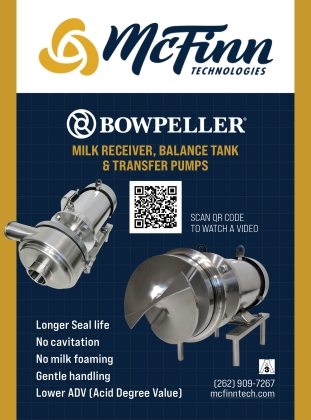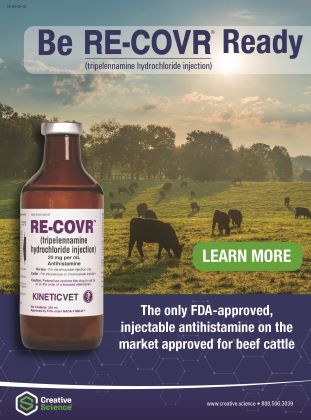3 Secrets to Sand Bedding Success

3 Secrets to Sand Bedding Success
It matters where your dairy’s sand bedding comes from.
Article and photo courtesy of McLanahan Corporation
HOLLIDAYSBURG, Pennsylvania. [May 16, 2024] – Sand bedding is synonymous with dairy cow comfort; that’s why it’s often called the gold standard. Sand is a forgiving, comfortable deep bed for cows, and it’s inorganic, preventing bacterial growth in freestalls.
But not just any sand will do. There may be subtle or substantial differences in sand depending on the source.
“The important thing to remember is that not all sand is created equally, so be aware of what you’re getting with your sand purchases,” says Renee Schrift, Business Line Director – Agricultural Systems at McLanahan Corporation.
Here are three things to keep in mind when sourcing sand bedding.
1. Match sand to manure handling goals
Base sand purchase and sourcing decisions on how you will incorporate sand into your dairy and manure management systems.
“Will you separate the sand for recycling, or will you need it to stay in suspension throughout your entire system and not be reused?” asks Schrift.
Your answer affects the optimal weight, density and particle size of your target sand, as well as how you source it.
2. Know sand differences
Seek to source what’s known as 30×50 (silica sand), meaning it’s made up of particles 30 to 50 microns in size. Because, this sand fits with most manure-handling systems and budgets and contains a desirable mix of individual grains of sand.
Concrete sand meets these criteria and is generally the preferred type of sand bedding for most farms. It is widely available and contains a good mix of particle sizes ideal for cow comfort, cleanliness and sand separation.
Concrete sand is characterized by the American Standard for Testing Materials specification ASTM C-33. It is also known as construction sand, torpedo sand or 2NS.
This sand also contains minimal fine material, which helps it stay loose in the stalls and readily drain away urine and dripped milk that can lead to the growth of mastitis-causing bacteria.
To ensure sand provides an optimal bedding surface, researchers suggest cows should be bedded with sand that contains less than 3% organic matter and more than 95% dry matter.[1]
“It’s a good idea to evaluate sand from time to time to safeguard consistency and to be certain you are getting what you’re paying for,” Schrift adds.
3. Pencil the cost
Given the rising cost of transportation, it makes sense to explore nearby sand sources.
Keep in mind that sand from an on-farm pit may contain undesirable levels of too-fine or too-coarse particles, decreasing cow comfort and sand recovery efforts. It may also contain high concentrations of organic matter and bacteria, defeating the purpose of bedding with sand.
“Regardless of sand origin, there are always costs involved in moving sand, whether your source is near or far,” she says.
If you plan to recycle sand, concrete sand — or 30-50 sand, is also ideal for this purpose because it contains minimal fine material that can be lost during the recycling process. More efficient sand recycling translates into lower bedding costs while reaping the benefits of sand bedding.
It’s not unusual for sand recycling systems to capture 95% of sand for recycling while removing an additional 3% of fines from manure.
As a result, dairies that recycle sand can cut their bedding cost significantly. For example, a 500-cow dairy using 50 pounds of sand per cow per day at $15 a ton spends $68,438 a year on sand. With a sand separation system that conservatively recovers up to 90% of sand for reuse, the dairy can save $61,594 a year by recycling their sand bedding.
“Keep the basics of cow comfort in mind when making sand selections, as well as important factors like source, particle size, proximity and price,” concludes Schrift. “Your cows and your bottom line will notice the difference in sand sources.”
To learn more about sand separation and manure management, visit mclanahan.com/solutions/dairy.
Headquartered in Hollidaysburg, Pa., USA, McLanahan Corporation offers over 185 years of experience in providing processing solutions to a variety of materials handling industries. Today, McLanahan’s operation includes offices in Asia, Australia and Asia Pacific, Europe, Latin America, MENA and North America, and it is supported by a strong network of dealers and partners around the world. For more information, contact sales@mclanahan.com.
[1] Cardoso P, Rivelli I. 2015. Bedding Quality is Associated with Milk Quality in Illinois Dairy Farms. University of Illinois. Available at: https://dairyfocus.illinois.



